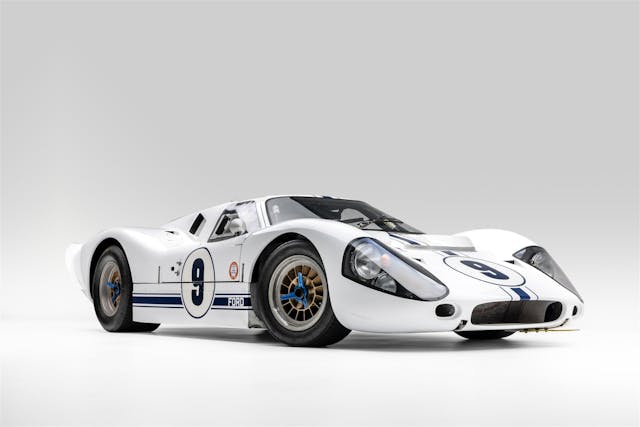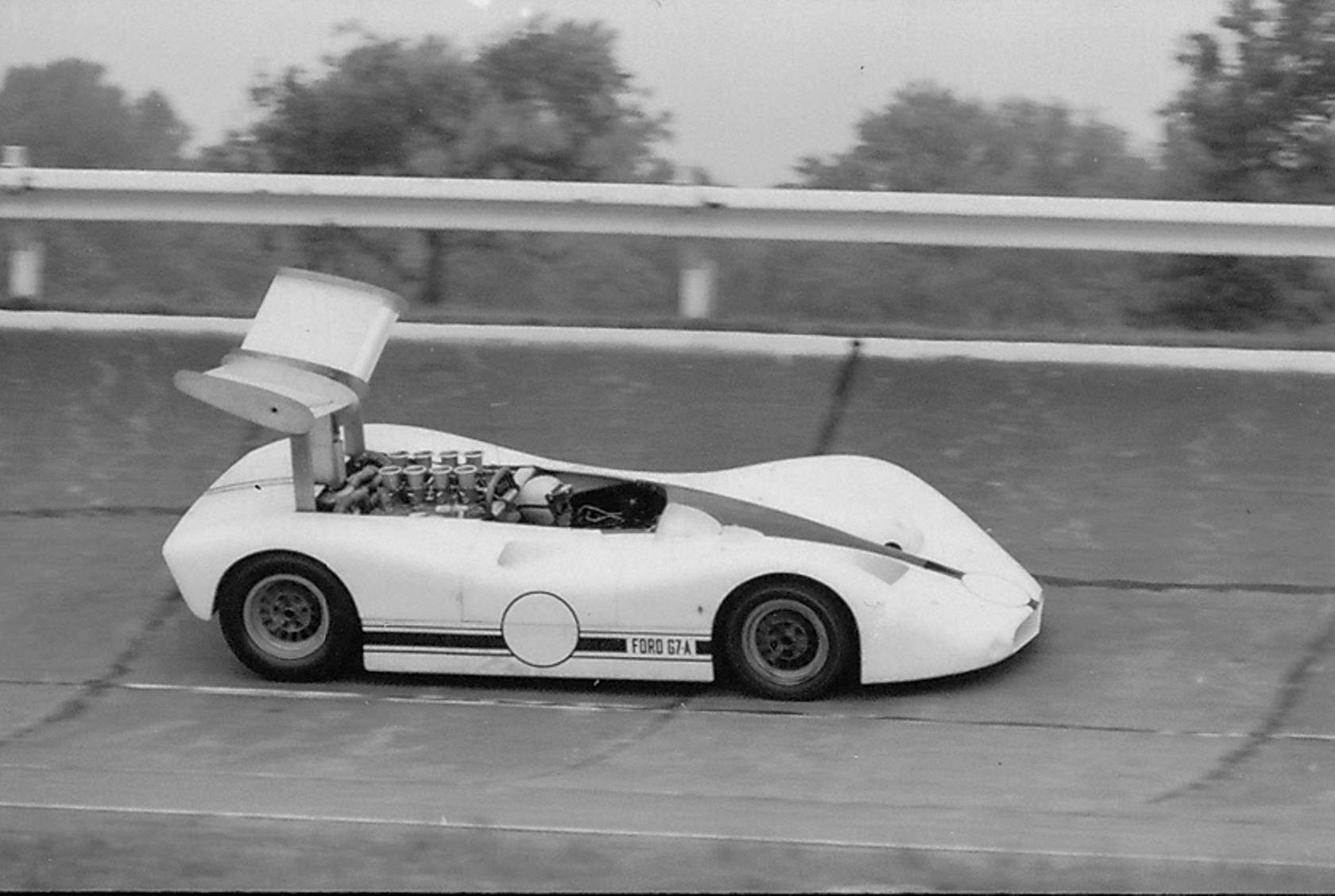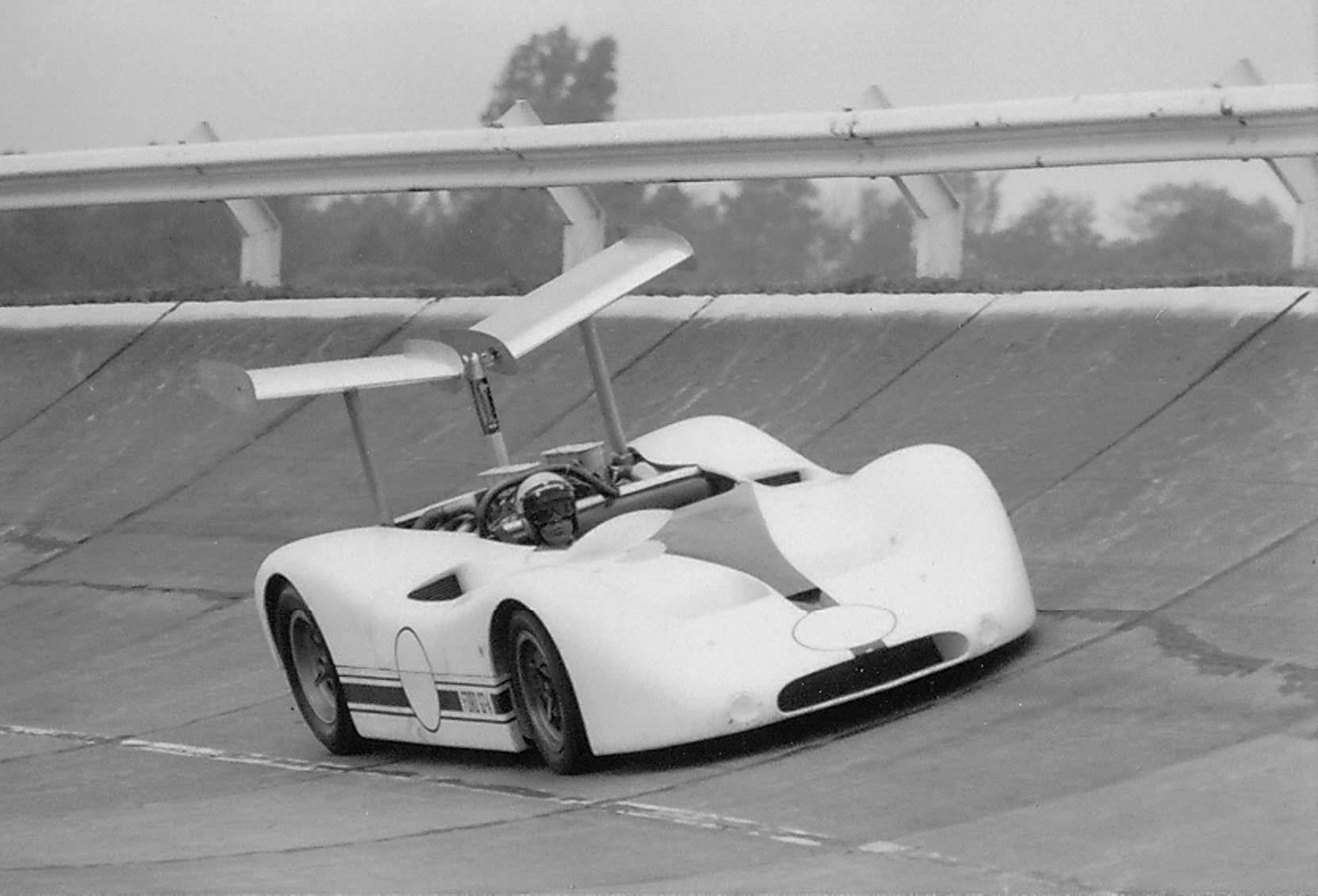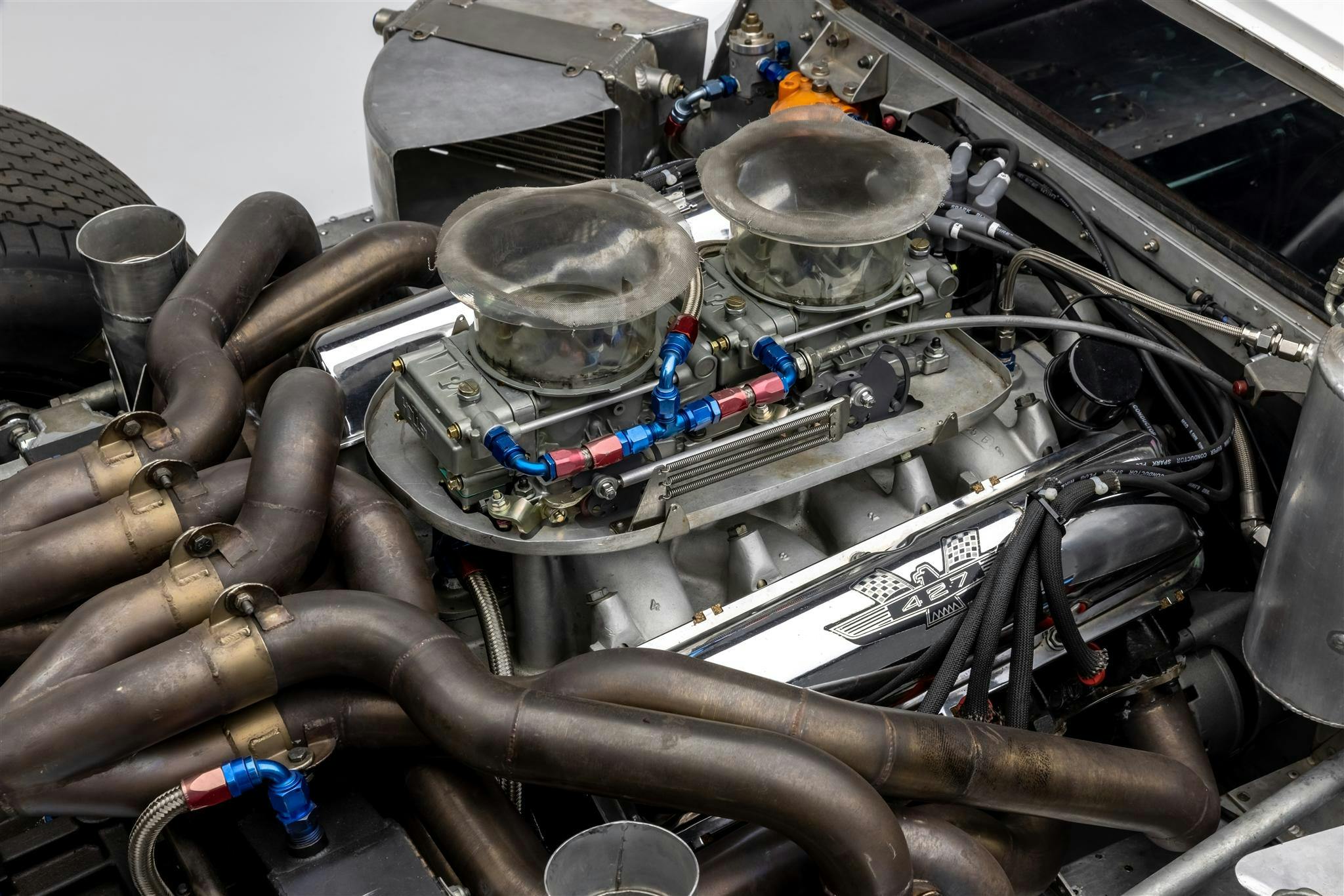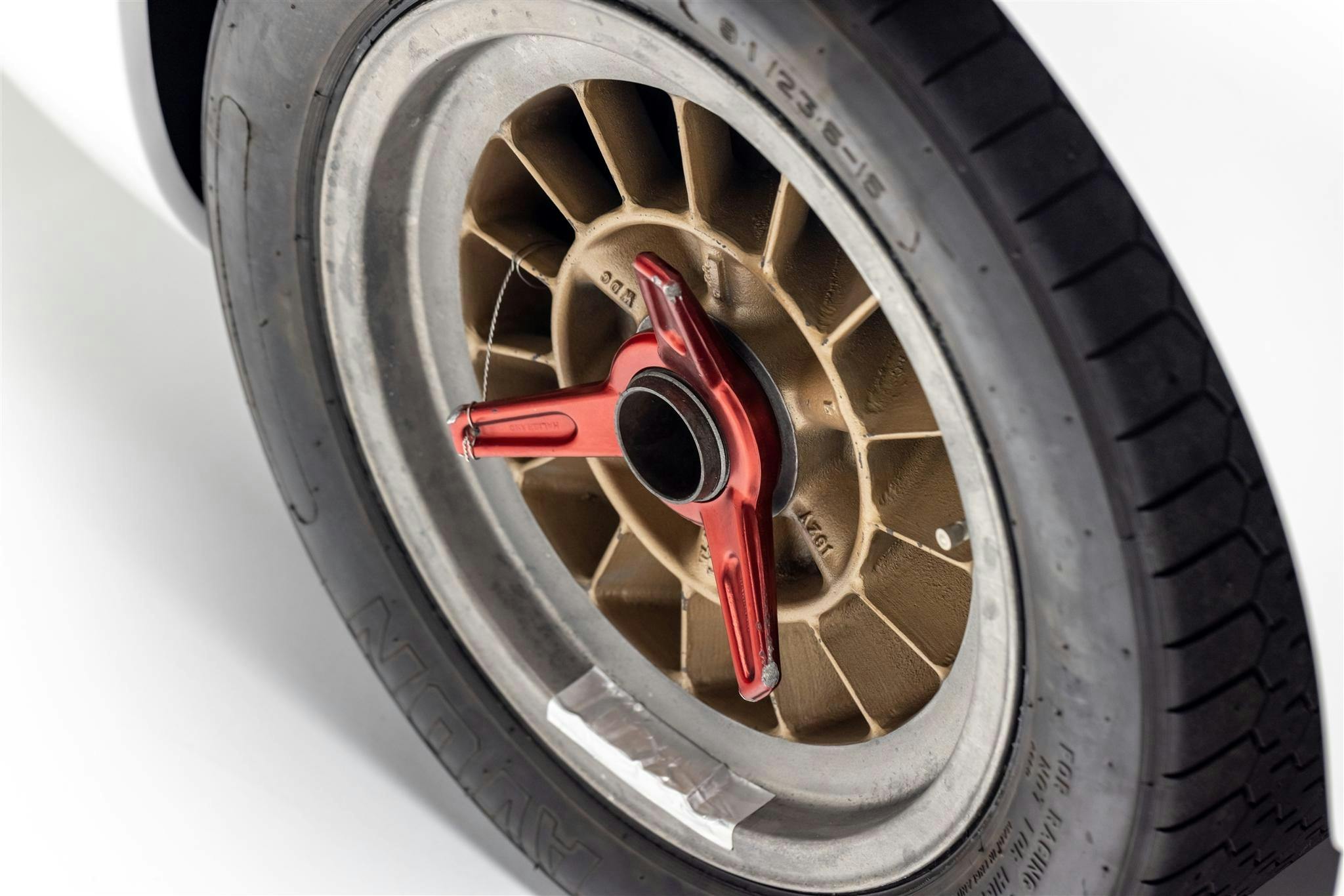This journeyman GT40 MK IV once had Can-Am in its sights
Few American car sagas are compelling as that of Ford’s GT40. The no-holds-barred heavyweight match between Dearborn’s finest and Enzo Ferrari is pure storybook glory, with an Oscar-nominated film to prove it. And while the MK II cars steal the most looks, in their wake came the MK IV chassis that wrote a whole chapter of its own. (The MK III was a limited-production road-going car, not a race car.)

Save for the 7.0-liter engine, gearbox, and a few suspension components, the MK IV was an entirely separate car on a different chassis than the MK I and MK II. Each of the MK IVs were dubbed as J-cars, in accordance with Appendix J regulations introduced by the FIA in 1966. The MK IV raced in only two events, the 1967 12 Hours of Sebring and the 1967 24 Hours of Le Mans, winning both. In 1968, when the rules for Le Mans suddenly outlawed the herculean 7.0-liter V-8, the MK IV suddenly found itself all dressed up with nowhere to race. The solution? Point it at another form of racing: the raucous open-cockpit class in Can-Am.
The car that attempted that lane change is headed to the auction block as a part of Bonhams’ Quail Lodge auction in Monterey, on August 13, 2021. Chassis No. J-9 is one of just 10 J-cars in existence. It’s among the last examples of the 7.0-liter GT40s ever built, featuring a 427 cubic-inch side-oiler V-8 with dual Holley four-barrel carburetors pushing out an estimated 465 horsepower and 6500 rpm.
Through the car’s extensive documentation, we can get a glimpse of a powerhouse racing program in limbo. At the unveiling of the ’68 Le Mans regulations, Ford abandoned the remaining chassis, sending two of them (J-9 and J-10) to Kar Kraft in Brighton, Michigan. The two chassis were constructed as Group 7 Can-Am open cockpit cars instead of the swoopy coupes that you probably picture when you think MK IV GT40. The Can-Am cars were fitted with larger sponsons to accommodate increased capacity fuel tanks, and a massive dihedral rear wing was affixed to the bodywork, not unlike the ironing boards atop Jim Hall’s Chaparral. A special three-valve all-alloy Cammer V-8 was fitted as well—the engine Ford hoped to run at Le Mans that year.
Dubbed G7A in its development days, this car spent extensive time in Dearborn at Ford’s wind tunnel as well as at the Dearborn test track. Behind the wheel during these track sessions was none other than Mario Andretti, who, along with Bruce McLaren, had won the 12 Hours of Sebring the year prior in a MK IV chassis. This car wasn’t quite as compliant; Andretti is said to have considered the G7A one of the scariest cars he’d ever tested.

The lofty competition ambitions never panned out for J-9, and the whole project was eventually sold to Charlie and Kerry Agapiou, brothers and ex-Shelby American Team Mechanics for $1, with a clause that gave Ford the option to buy the car back for the same price within the year, should it want to. That never happened, and J-9 sat largely untouched until 2012, when it was purchased by Cobra Automotive out of Wallingford, Connecticut. Cobra restored the car, in the process converting it from the Can-Am G7A project back into a more traditional MK IV GT40 body. The group then sold the car to today’s owner, who is putting the beast up for bid in the coming weeks.
The car is fresh off a 2018–2019 mechanical refresh at the hands of a few noted figures in the Ford/Shelby community. The car’s period 427 side-oiler race engine was rebuilt by Craig Conoley, and Patrick Wiseman of Traction Productions redid the T-44 transaxle. The suspension and rebuild was handled by Graham Collins, whose father was an ex-Shelby employee and Crew Chief for the 1967 Le Mans-winning Mk IV GT40.
Although it’s still a plenty desirable car, this sale isn’t likely to set new pace for the MK IV GT40 market. Bonhams’ pre-sale estimate of $3.0M–$3.5M places it right in line with our #4-condition (Fair) rating. The main thing holding it back? Lack of competition history. As Hagerty Valuation Analyst Greg Ingold explains, this is a classic case of it’s not about who you are, but what you did. “GT40s are rated by race history and originality of major components, more than condition alone,” he says. “Cars without a winning history or even little race history tend to fall short in value compared to ones that have participated in major races.”

It doesn’t help that this car tried followed two different paths in its lifetime. Here’s Ingold again: “As with all race cars, breakage and wrecks are commonplace, so cars retaining the most parts draw serious collectors. Having been converted to Can-Am spec and then back, this car has seen substantial body work, which will likely be a sticking point for some.”
Not for everyone, of course. Looking past the brief dalliance into Can-Am madness, truly taking this car at face value smacks you in the face with one truth: There’s a GT40 going to auction. Remember, this is still one of the original J-cars produced, not one of the unfinished cars assembled from spared decades on. For that reason alone, this GT40 is very noteworthy, especially when you consider that only 10 examples were fully completed before production ceased on the J-cars.

Only time will tell how this sidelined superstar will do under the gavel. Until then, we’re sure you won’t mind just marveling at the engineering and the lore surrounding this machine. Not to mention one of America’s greatest racing legacies.
